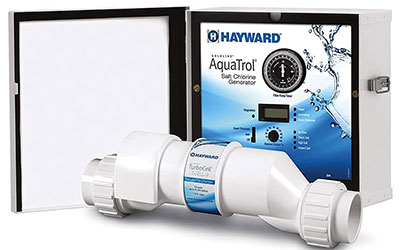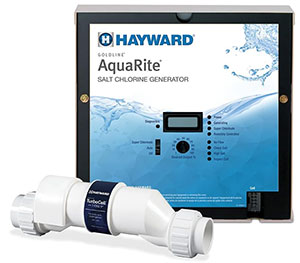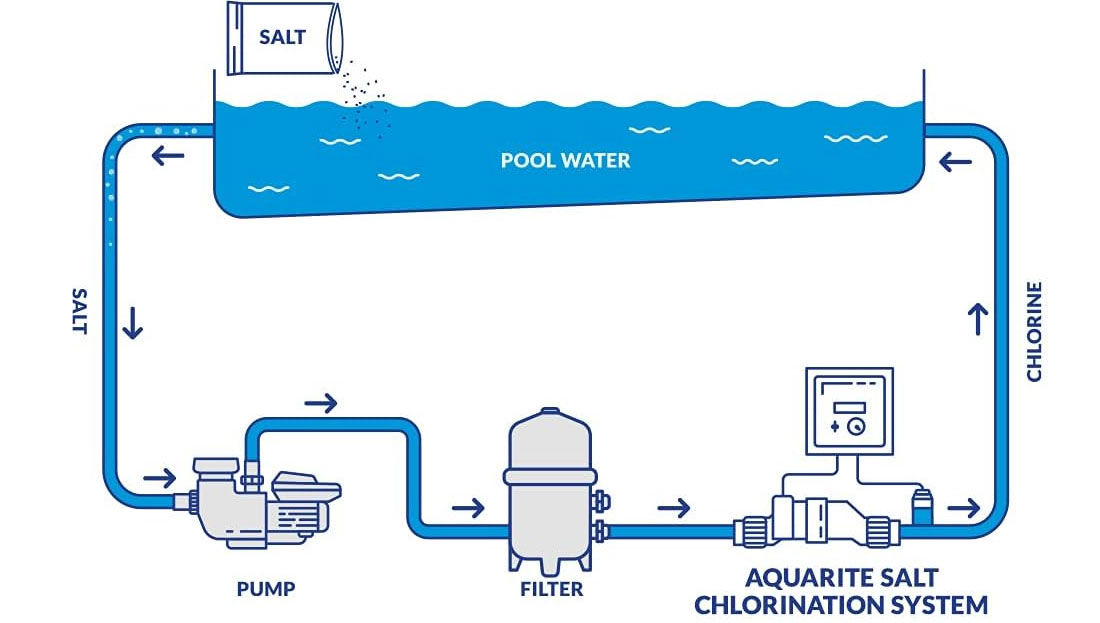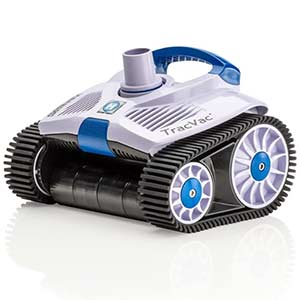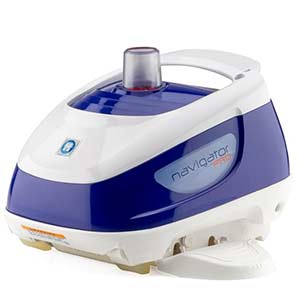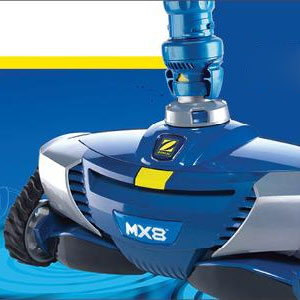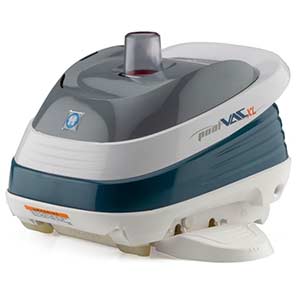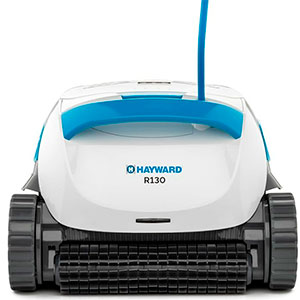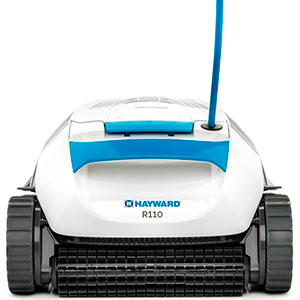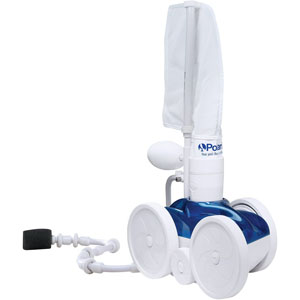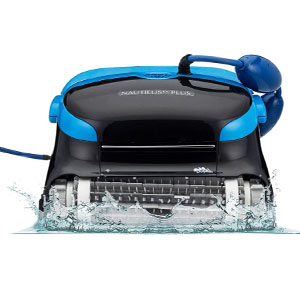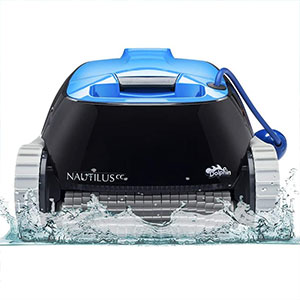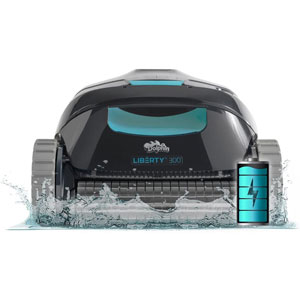Hayward AquaTrol vs. AquaRite – Comparison review
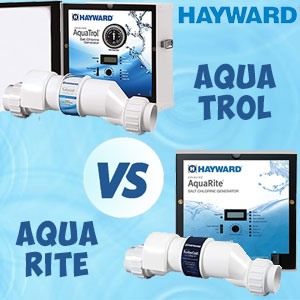
The saltwater sanitation system dissolves salt inside its cells to generate chlorine by electrolysis. Normally, sodium chloride is used as a source of chlorine. Chlorine will be in the form of sodium hypochlorite acid without chloramines, which is a common byproduct during normal dissolvent of chlorine-containing substances. For those who decided to make a saltwater pool, we will compare two chlorinators from Hayward. We will investigate in which pool they should be used and what the difference is between them.
Hayward AquaTrol vs. AquaRite – Comparison Table
Main differences between Hayward AquaTrol and AquaRite
There are many similarities between Hayward AquaTrol and AquaRite models, but we want to highlight first their main differences:
- AquaTrol is designed for above-ground pools, while AquaRite is for in-ground pools.
- AquaTrol should be used for pools up to 18.000 gallons, while you can use AquaRite for pools up to 40.000 gallons. The described model in this review is for a 15.000-gallon pool.
- AquaRite W3AQR3 is compatible only with one type of cell, while for AquaTrol, you may use three types of cells.
- AquaTrol has four types of connections, while AquaRite comes in only one option.
- AquaTrol has the same features and functions as AquaRite, but it produces less chlorine per hour.
To read more details about differences and others, please go further in this review.
Detailed product review
Hayward produces several saltwater generators: AquaTrol, AquaRite, Saline C, and Salt & Swim. The quantity of produced salt depends on how long the pool pump works and on the chlorinator’s type. However, the main requirements and operation mechanisms are the same for all chlorinators. We will start our detailed comparison with feature similarities of the described generators in this article.
Operational information
Hayward AquaTrol and AquaRite are automatic chlorine generation systems with built-in filter pump timers to sanitize your pool by converting the sodium chloride into free chlorine at a low concentration when it is not even tasted. The free chlorine efficiently kills bacteria and algae; after that, it reverts to the salt. The salt goes back to the chlorinator, where it converts to free chlorine by electrolysis; it is a constant recycling process. The addition of new salt is required if you are changing the pool water, backwash the filter, or have some spills or drains. The produced water is silky and soft and does not irritate the eyes or dry the skin.
To install these chlorinators, it is required to have the following water characteristics:
- Salt – 2700-3400 ppm
- Free Chlorine – 1.0-3.0 ppm
- Total Alkalinity – 80-120 ppm
- Cyanic Acid (Stabilizer) – 60-80 ppm
- pH (7.2-7.6)
- Metals – 0 ppm.
These parameters are recommended by the National Spa and Pool Institute and are required for safe water enjoyment and relaxation. You need to check the water parameters regularly (once per week) using test strips or reagents.
AquaTrol Salt Chlorination – main features
AquaTrol is an automatic chlorine generation system for above-ground swimming pools from Hayward. This system goes with TurboCell Salt Cell (T-cell-5) and control panel and is compatible with GLX-CELL-5, T-CELL-5, and TCELLS318. AquaTrol is designed for middle-sized pools of up to 18.000 gallons of water. Its timer can be guaranteed to be set for proper sanitizing and filtration levels of such pool size. Nevertheless, the accuracy of salt concentration depends on the weather conditions (temperature, rainfall, humidity) and pool cleanness.
You can choose several AquaTrol options – HP (straight blade line cord and outlet, hose/pipe fittings, 120V/15A), HP-TL (twist lock line cord and outlet, hose/pipe fittings, 120/20A), RJ (straight blade line cord and outlet, return jet fittings, 120V/15A) and RJ-TL (twist lock line cord and outlet, return jet fittings, 120V/20A). RJ models are mounted directly to the return jet; HP models have fittings for hose connections or PVC pipe, and TL models have twist lock line cords and outlets. For proper installation of the product, we recommend you consult the stone installation specialist to show the particular location point and required maintenance.
You control the chlorinator with two parameters – the timer and the desired output. You are setting the timer according to the working time of your pump, which will push your chlorinator to work at the same. You can also choose the option to turn it off until you start it manually or turn it off for 24 hours of work. The desired output can be chosen between 1 to 100% (1/10/20/…/100). Normally, for this type of salt generator, the regular summer setting is 70-80%. At the beginning and end of the season, the settings may be lower due to the lower ambient temperature. This output shows the quantity of active chlorine that your chlorinator will produce from the dissolved in the pool.
The warranty on this AquaTrol product is one year for no defects in materials and workmanship during normal use and service. The guaranteed working time is two years. All warranties are valid only if purchased directly at Hayward or via partners (official Amazon store, for example).
- Setting the desired output level from 1 to 100%
- Two working modes – super chlorinate (for 24 hours only) and auto
- Choice of several connection joints
- Support of several types of cells
- Saves up to 50% on salt thanks to recirculation
- Quick and easy installation: less than 1 hour
- 7 diagnostic LED indicators
- The plumbing kit is included
- The output settings are analog and not precise
- Strict water working conditions
- No sound notification if some error occurs
Hayward W3AQR3 AquaRite – main features
Hayward AquaRite is a series of automatic chlorine generators for in-ground pools of different sizes. In this review, we will review the model for pools up to 15.000 gallons (AQR3 models), but you may also find AQR9 models for pools up to 25.000 gallons and AQR15 for pools up to 40.000 gallons. The operation, maintenance, and installation for all models are the same. You need to put the NaCL salt into the swimming pool, and AquaRite will do the rest, dissolve the salt, and produce the active chlorine to kill harmful stuff in your pool. AquaRite is one of the best chlorinators on the market; it can also be used with vinyl liners for spas and pools, providing an environmentally friendly solution.
If you like the professional version, you can purchase the AquaRite Pro, which automatically also senses the pH level while controlling the salt level.
AquaRite supports different chlorinator cells, and operational settings depend on the cell. The AQR3 model comes with W3T-CELL-3. That means you should set the turbo cell type as “t-3”. This cell produces 210 lbs of chlorine per day. T-cell-9 and T-cell-15 are designed for larger pools, 25.000 and 40.000 gallons, respectively.
The control functions are the same as for AquaTrol – desired output (from 1 to 100), switch to change modes, several indicators, and LCD screen to show the current settings. It is recommended to start from 50% of the desired output and to test the salt concentration for 2-3 days. Normally, within 2-3 adjustments, you will find the parameters required to receive soft water without a chlorine taste. AquaRite automatically stops working if the temperature becomes below 50 F or the salt concentration is too high. Be aware when temperature increases significantly, the salt concentration will change.
AquaRite can be connected to all automation control systems for the overall pump, such as Pentair, Hayward, or Polaris. All functions will be available for remote control; on the chlorinator, you will see the corresponding LED indicator (“remotely controlled”).
- Gentle salt generation
- Possibility to integrate into the most automated systems
- Simple setup and maintenance
- Available in different sizes
- Several working modes
- Automatic chlorine generation
- Environmentally friendly
- 8 LED indicators for diagnostics
- Expensive salt chlorine generator
- No sound indication
- Compatible only with one cell
- The settings are not precise
Calculation of the salt quantities
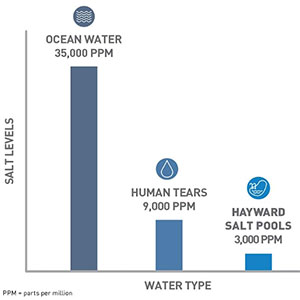
Suppose you previously made shocks and added salt, but your salt level is below the recommended (3200 ppm). In that case, we suggest adding salt in small quantities to prevent achieving the high salt level when the AquaTrol or AquaRite shuts down, and your water will have a salt taste. The table in the Hayward manual says, for example, that if your current salt level is 400 ppm, then to achieve 3200 ppm in a 14.000-gallon pool, you need to add 327 pounds of salt. The stabilizer (cyanuric acid) should be checked when you check for the salt level. For a 14.000-gallon pool and the AquaTrol chlorinator, you need to add 5.9 pounds to achieve a healthy 30 ppm if your current stabilizer level is 0 ppm. But as for the stabilizer (cyanuric acid) for the 14.000-gallon pool and the AquaRite chlorinator, you need to add 3.5 pounds to achieve a healthy 30 ppm if your current stabilizer level is 0 ppm.
For this chlorinator, the pure (or food quality) 99% NaCl salt is used. Normally, it is available at any Hayward local dealer in 40-80 lbs. bags. You can also use salt pellets, but they will dissolve longer. Rock salts are not recommended as they contain more than 1% of anti-caking additives. NaCl salt should be added directly into the pool; it is recommended to distribute the salt inside the pool to speed up the process. The pool pump should work for 24 hours to evenly disperse the entire water volume. Only after 24 hours can you measure the salt concentration to receive the correct value. If you exceed the recommended salt concentration, you need to drain the water and add fresh water partly; there is no other way to reduce the concentration.
Maintenance and winterization
The Hayward chlorination salt system requires minimum maintenance. For normal and long operation, every three months, you need to open and visually inspect the cell or after you clean your pool filter. After 500 hours of operation, the LED light “inspect cell” (it is available in AquaTrol and AquaRite) will flash to remind you about the necessity of checking its operation. The electrolytic cell has a self-cleaning feature, so during normal operation, you do not need to clean the cell. But if, after checking, the LED light continues to flash, you need to clean it manually; if flashes continue, you need to replace the cell. For cleaning, you need to take the cell out from the chlorinator, clean it with a garden hose, and scrape it with a plastic or wooden tool if necessary. If there is a lot of calcium salt (a byproduct of electrolysis), you may need some acids to dissolve them.
For winter, the AquaTrol and AquaRite chlorination systems should be turned off to prevent freezing the water inside. Be sure to drain all pool plumbing at the end of the swimming season. At the beginning of a new season, you can turn on the system only after the water chemistry composition is according to the recommended values.
Buyer’s Guide
Saltwater pools are not pools with ocean water; these words are used to describe the method of sanitizing itself. It means that the chlorinator is installed to produce active chlorine. There are a lot of myths that chlorine can ruin the deck and the swimming pool or you have to use a lot of salt to feed the chlorinator. For sure, there are some alternatives to generators – tables or liquid chlorine.
Actually, there are more advantages to generators than disadvantages to having such a pool. We want to highlight them to prove again that the salt generation system is a good purchase.
- You still have chlorine in your pool after electrolysis
- You need to spend money on the system and periodically replace cells (up-front costs)
- Cells required some cleaning every 3-5 months
Going back to the comparison of Hayward AquaTrol vs. AquaRite, we have already provided a detailed review of these models; we want to add some information about installation, control, and diagnostics. These features have some differences for these models.
Installation
The AquaRite installation process consists of two parts: installation of the control panel and installation of the cell. The chlorinator cell should be installed after the pump, filter, and heater (if available), before the flow switch, and return to the pool or spa. For the cell installation, no pool drainage is required. The control panel should be installed five feet away from the pool.
The power cable from the panel should be connected to the GFCI outlet for the AQRXL model and 120/240 VAC directly for the AQR model. Suppose you want to integrate the system into the automation system. In that case, you need to connect a cable to a special port on the control panel and do some customizable settings according to the manual.
The installation process for AquaTrol and AquaRite is the same. The only difference is the original choice of piping and hoses. AquaTrol has more options for all installation cases, so it is the winner in this round.
Control and indications
The AquaRite control is performed with the main switch in three positions – auto, super chlorinate, and off. In the off mode, the cell still has power (indicator power is green). Super chlorinate mode means that the system has 100% output for a 24-hour period; after that time, the system automatically turns off the cell even if the indicator is still in this position. If you want to stay longer in this mode, you need to go to the off button and then switch back to super chlorinate.
The LED indicators show power, normal operation (generating or super chlorinate), remote control, and errors (no flow, low salt level, high salt level, cell inspection). You also have an adjustment knob to set the desired salt output in %. The current salt and temperature are displayed on the LCD screen. Controls allow to set the filter time per day, the desired output, and the amount of salt to be electrolyzed.
The control functions of the two salt generators are almost identical – the same knob to change the desired output and the switch to control the working mode. However, the AquaRite has an additional LED indicator for remote control, which is helpful if you integrate the chlorinator into the overall pool automatic system. We consider AquaRite the winner in this round.
Diagnostic
You can start diagnostics on both salt generators with only one button that is located on the panel – “Diagnostic .”There is no difference between Hayward AquaTrol vs. AquaRite in this regard. But AquaRite shows a cell type in the diagnostic, so it is the winner.
How to choose the best chlorinate generator?
If all the above pros and cons of salt generators push you to buy one, please go through this short part. The proper choice of the salt generator should be based at least on the following criteria:
- Chlorine output (the more chlorine the generator can produce per hour, the better; you can use it less and save electricity costs).
- Size and type of the swimming pool (all generators with cells are designed for a specific size of the pool and the in-ground or above-ground type).
- Maintenance and installation requirements (possibility of installing in your plumbing and costs of such installation and maintenance).
- Running costs (such costs include future electricity bills, costs of salt, and the price of changing cells).
- Warranty (the extended warranty is the best).
- Customer reviews (the 5-star reviews are the best, for sure).
However, if it is technically not possible to install the generator, we suggest choosing other chlorine sources – tablets, liquids, or granules. There are no limitations normally.
Frequently Asked Questions
What does flashing LED lights on the AquaTrol control panel mean?
 The flashing LED lights inform you about some problems with your salt generator. For example, the “generating” light is flashing when the water temperature is too high or too small to operate. The “test salt level is” flashing when you need to test your pool water. For the full list of problems, please check the manual “troubleshooting” section.
The flashing LED lights inform you about some problems with your salt generator. For example, the “generating” light is flashing when the water temperature is too high or too small to operate. The “test salt level is” flashing when you need to test your pool water. For the full list of problems, please check the manual “troubleshooting” section.Can I install a chlorine sensor after the chlorine generator?
How do we understand that the cell requires a replacement?
Why did my salt water with the AquaRite pool become cloudy?
Conclusion
Hayward chlorinators are the best helpers for automatically maintaining healthy salt concentration. AquaTrol and AquaRite both have 5-star reviews and work similarly. The difference between them is different salt output, support of different cell types, and some minor changes in installation and control features. Moreover, AquaTrol is designed for above-ground models, while AquaRite is for in-ground models. But in general, if you buy the chlorinator based on your pool type, you will have reliable service for many years with low maintenance.




